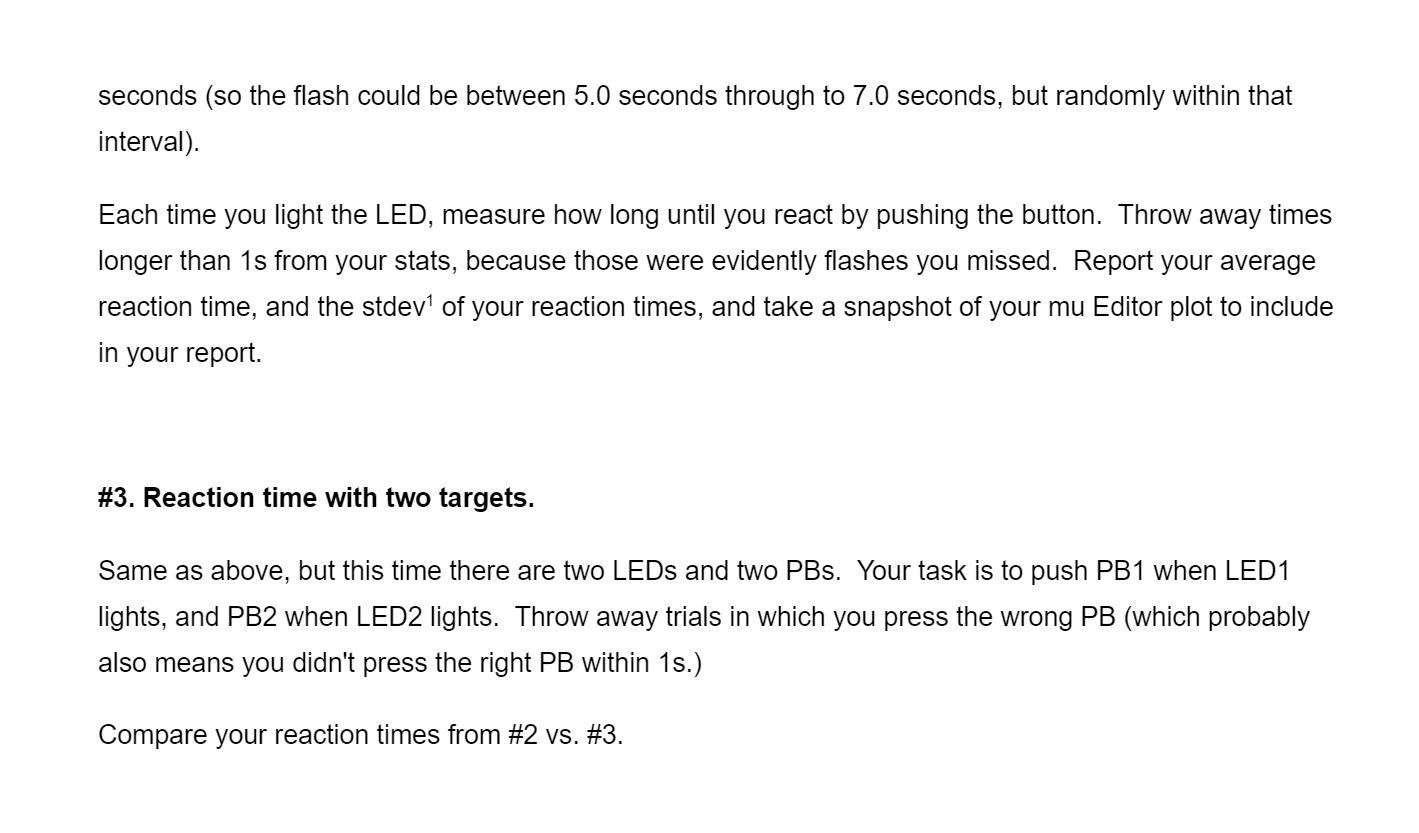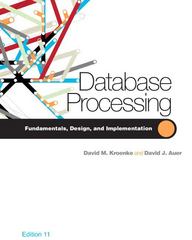This is python homework with a Raspberry Pi Pico

\#1. PB simultaneity. You have two PB switches. Try to push them at the same time. Of course you can't quite do it exactly at the same time. Identify which of the buttons was pushed first and light one of two LEDs to show which PB was first. And print the delta-time in integer milliseconds (not nanoseconds) rounded to the nearest millisecond. Do this for 10 trials and record the delta-time in ms for turning in (see bottom for what to hand in). \#2. Reaction time (RT). Flash an LED and determine how long it takes, in milliseconds (ms), for you to react by pushing a button: print this, and by using a loop, plot your successive RTs using mu Editor's Plotter. See if you can get faster with practice. Reaction time (RT), like flicker fusion frequency, is a basic brain-related parameter that's very useful. It varies with age, and more importantly, with "cognitive load." Try counting backwards while doing your RT experiment, and see how your RT varies with cognitive load. After this exploration, now go back to the standard RT experiment (no additional cognitive load). Do a fixed number of trials (like 50) but not at exact intervals, which would make it not so much a reaction time estimate as an estimate of how accurately you can anticipate a periodic event (two different things entirely!). To foil your brain's predictive machinery, flash the LED at random intervals, such as 52 seconds (so the flash could be between 5.0 seconds through to 7.0 seconds, but randomly within that interval). Each time you light the LED, measure how long until you react by pushing the button. Throw away times longer than 1 s from your stats, because those were evidently flashes you missed. Report your average reaction time, and the stdev 1 of your reaction times, and take a snapshot of your mu Editor plot to include in your report. \#3. Reaction time with two targets. Same as above, but this time there are two LEDs and two PBs. Your task is to push PB1 when LED1 lights, and PB2 when LED2 lights. Throw away trials in which you press the wrong PB (which probably also means you didn't press the right PB within 1s.) Compare your reaction times from \#2 vs. \#3








